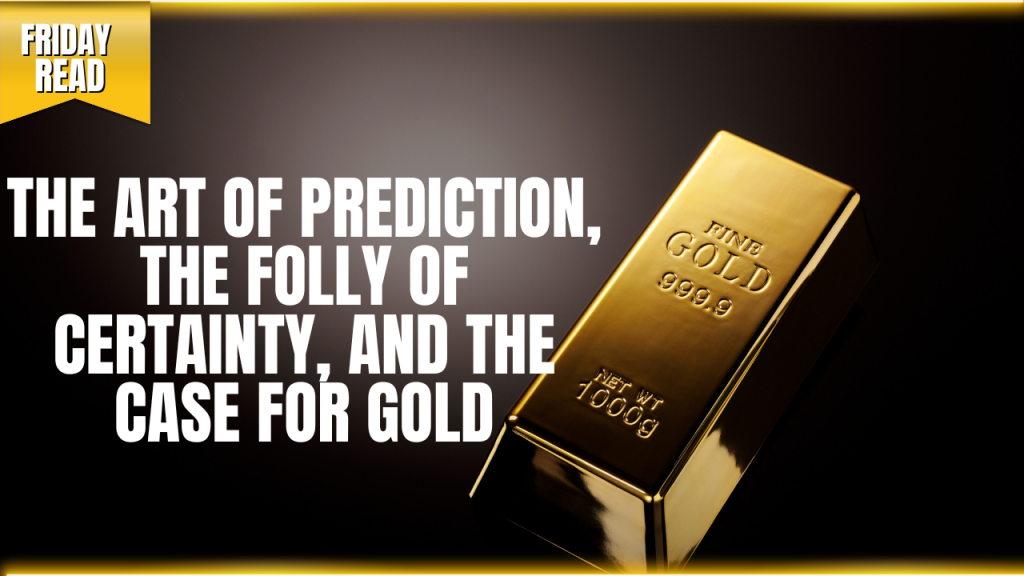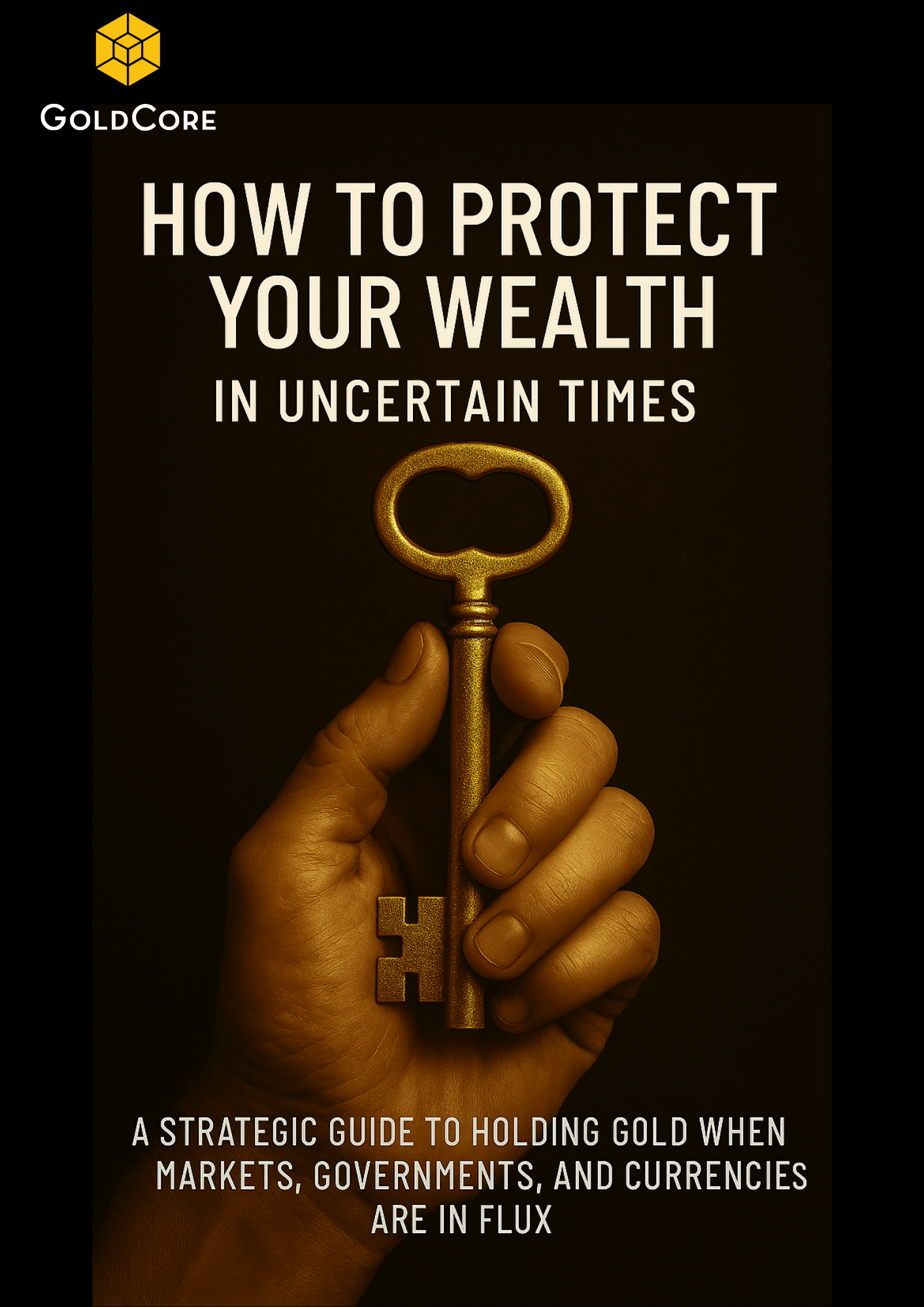
This week I found myself once again sharpening the pencil, staring into the foggy crystal ball, and submitting forecasts for the Reuters Precious Metals Survey. It’s a peculiar exercise, this act of prediction, especially in the world of gold.
The survey invites industry participants to project where the prices of gold, silver, platinum, and palladium might land over the coming quarters and years. Like many in the precious metals space, I approach this not as a science, but as a conversation with uncertainty. You compile your data, model scenarios, review the charts, absorb the geopolitics, and then you accept that, ultimately, the future will make a mockery of you anyway.
That’s not cynicism; it’s humility. If there’s one thing we’ve learned in recent years, be it through pandemics, wars, inflation spikes, political turmoil, and trade fragmentation, it’s that surprises are the rule, not the exception. And yet, most investors still build portfolios as if the world is linear and orderly. It isn’t.
Which is why, amidst the fog of forecasts, I always return to a simple principle: buy gold not because you know what will happen, but because you don’t.
The Pause That Refreshes
Gold has had an extraordinary run. Since bottoming at $1,429/oz in November 2022, it has soared past $3,450/oz, setting fresh record highs no fewer than 68 times along the way. That kind of strength is not spontaneous combustion. It reflects global concerns: relentless central bank buying, stubborn inflation, deglobalisation, and the rising drumbeat of geopolitical and trade risks.
But no market climbs forever in a straight line. In the second quarter of 2025, gold’s momentum softened. The price still rose, 5.5% for the quarter, but it was a gentler pace compared to the fiery 19% surge in Q1. A pause, perhaps. Or something more?
According to the latest World Gold Council note, gold has historically experienced bear markets under very specific conditions: when real interest rates rise quickly, when the U.S. dollar strengthens materially, and, crucially, when fear recedes and optimism returns. That last point is particularly striking. Gold doesn’t falter in chaos; it retreats when the world forgets chaos exists.
The Silver Spike Conspiracy: Are Crashes Being Covered Up?
Which raises a question: are we entering a period of calm and clarity?
Let’s consider the bear case. Could central bank demand dry up? Possibly, though there’s little evidence of that. Might investment demand from ETFs or retail buyers wane? Perhaps, if investors believe the worst is behind us. And could competition from riskier assets or a strong dollar divert flows from gold? Absolutely, in the short term.
But what would it take for a sustained, structural downturn in gold? Not just a slowdown, but a real shift?
We’d need a world in which geopolitical tensions ease, fiscal responsibility returns, inflation is tamed without consequence, and governments show restraint in monetary policy. We’d need a world where risk feels distant, where trade flows freely, and where the average saver believes fiat money will retain its value over time.
Forgive me if I don’t see it.
Instead, we live in a world of weaponised finance, of currency blocs and capital controls, of unresolved sovereign debt crises and central banks caught between credibility and insolvency. As the World Gold Council notes, the very conditions that might drive gold into a long-term decline are those least likely to manifest in the current environment.
This is why I’m wondering if we would do better to describe gold as a kind of insurance against certainty. The more confident the world is in its outlook, the more gold is ignored. But the moment that confidence proves misplaced, and it often does, gold reasserts itself not as a speculation, but as a correction to overconfidence.
The deeper truth is that gold doesn’t just respond to the world. It reflects it. It is not a bet on disaster, but a mirror held up to our economic and political dysfunction. It tells us when governments are overextended, when inflation is creeping, when trust in financial institutions is fraying.
That’s why making predictions about gold is so hard. Gold isn’t just about markets. It’s about mood, psychology, and belief. It moves when people lose faith in other things. It rises not when the world ends, but when illusions crack.
And as a result, the most compelling reason to own gold is not because you think a crash is coming tomorrow, but because you believe fragility is systemic and trust is cyclical.
So yes, I have submitted my forecasts. They will likely be wrong in the details, but I hope not in direction. More importantly, they serve as a reminder that we can only ever see so far.
The art of managing wealth, whether as a central bank, a pension fund, or a family, lies not in certainty but in resilience. And there are few assets as durable, portable, liquid, and uncorrelated as physical gold.
You don’t buy gold because the world is ending. You buy gold because the world keeps going and keeps surprising us.
Buy Gold Coins

Buy gold coins and bars and store them in the safest vaults in Switzerland, London or Singapore with GoldCore.
Learn why Switzerland remains a safe-haven jurisdiction for owning precious metals. Access Our Most Popular Guide, the Essential Guide to Storing Gold in Switzerland here.
Receive Our Award Winning Market Updates In Your Inbox – Sign Up Here





